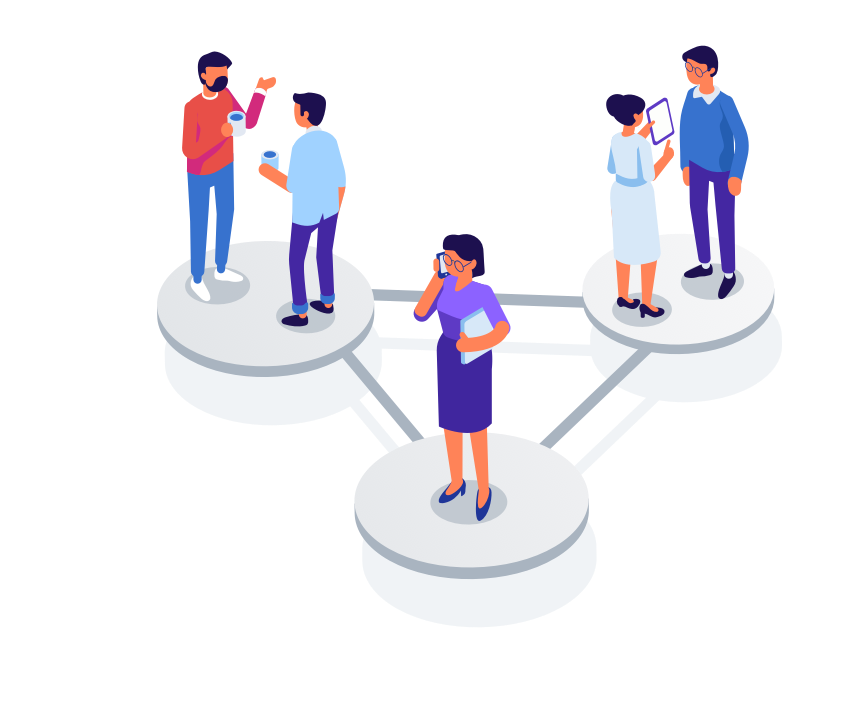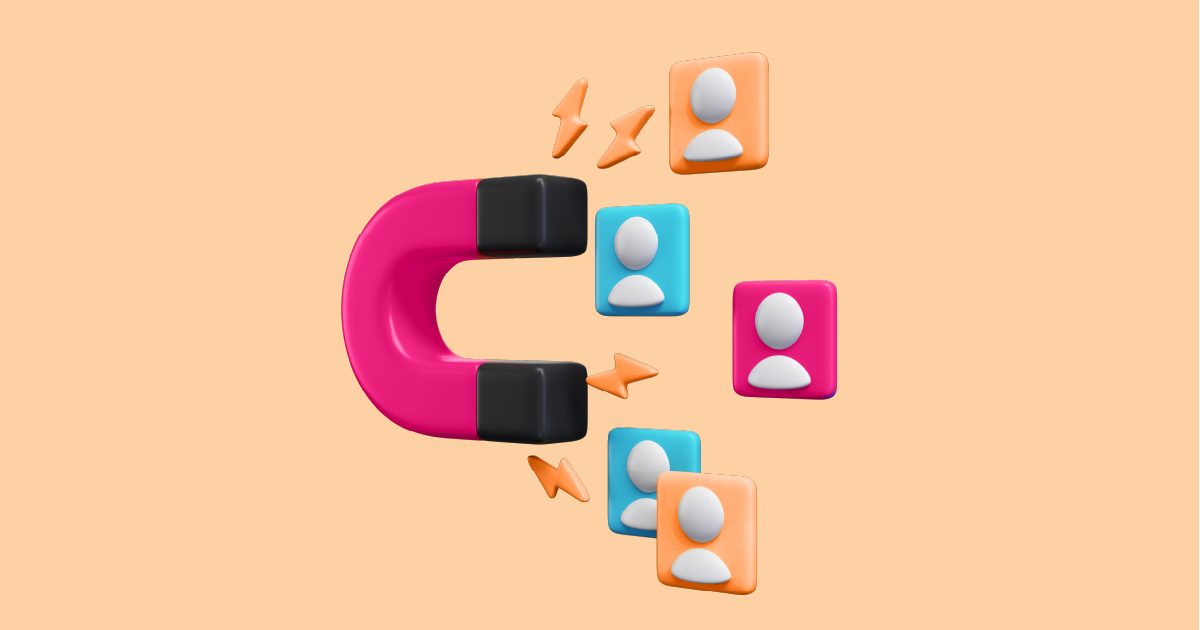In today’s fast-paced digital world, businesses are constantly seeking ways to connect with their customers on a deeper level. One of the most effective strategies for achieving this is through customer segmentation. In this article, we will explore the concept of customer segmentation and how it can revolutionize your marketing efforts.
Introduction to Customer Segmentation

Customer segmentation is the process of dividing your customer base into distinct groups based on shared characteristics. These characteristics can include demographics, geographic location, psychographics, and behavior. The goal is to understand your customers better and tailor your marketing strategies to meet their specific needs and preferences.
Benefits of Customer Segmentation
1. Personalization
- By segmenting your customers, you can create personalized marketing messages that resonate with each group. This leads to higher engagement and conversion rates.
2. Improved Customer Retention
- When you understand your customers’ needs, you can proactively address issues and provide solutions, enhancing customer loyalty.
3. Efficient Resource Allocation
- Segmentation allows you to allocate your marketing resources more efficiently by focusing on the most profitable customer segments.
Types of Audience Segmentation
1. Demographic Segmentation
- Dividing customers by age, gender, income, education, and other demographic factors.
2. Geographic Segmentation
- Segmenting is based on location, such as country, city, or climate zone.
3. Psychographic Segmentation
- Grouping customers by their values, lifestyles, interests, and opinions.
4. Behavioral Segmentation
- Segmentation is based on customers’ actions, such as purchase history, brand loyalty, and online behavior.
How to Implement Customer Segmentation
1. Data Collection
- Gather relevant data about your customers, including their demographics, purchase history, and online behavior.
2. Data Analysis
- Analyze the collected data to identify patterns and commonalities among your customers.
3. Target Audience Identification
- Create distinct customer segments based on the analysis, ensuring each group has unique characteristics.
4. Customized Marketing Strategies
- Develop marketing campaigns tailored to each segment’s preferences, ensuring higher relevance and engagement.
Record-Breaking Case Studies for AIM Insights Tool
Case Study 1: E-commerce Giant Boosts Sales with AIM Insights
Background
An e-commerce giant faced challenges in engaging a diverse customer base. The company aimed to personalize marketing efforts to enhance customer satisfaction and increase sales.
Solution
The company implemented AIM Insights to segment its customer base. Using advanced AI algorithms, AIM Insights analyzed vast amounts of data, including purchase history, browsing behavior, and customer demographics.
Results
- Sales Increase: Within six months, the company reported a 25% increase in sales due to highly targeted marketing campaigns.
- Customer Engagement: Personalized email campaigns saw a 40% higher open rate and a 35% increase in click-through rates.
- Customer Retention: Enhanced personalization led to a 15% improvement in customer retention rates.
Influencer Quotes
- John Smith (@EcomGuru): “The results achieved by the e-commerce giant using AIM Insights are nothing short of phenomenal. Personalization is the key to modern marketing success.”
Case Study 2: Financial Services Firm Improves Client Retention
Background
A financial services firm struggled with client retention and engagement. The firm sought to understand client needs better and offer personalized financial advice.
Solution
The firm adopted AIM Insights to segment clients by financial goals, investment behavior, and risk tolerance. The insights helped create customized financial plans and communication strategies.
Results
- Client Retention: There was a 15% increase in client retention rates within four months.
- Client Engagement: Personalized financial advice emails saw a 50% higher engagement rate.
- Revenue Growth: The firm experienced a 12% increase in revenue from tailored financial products.
Influencer Quotes
- Mark Johnson (@FinanceGuru): “AIM Insights has set a new standard in financial services. Personalized client interactions are driving significant business growth.”
Tweets and Quotes from Influencers
Tweets
- @MarketingMaven: “Customer segmentation is the future of marketing. Tools like AIM Insights are leading the charge in creating hyper-personalized experiences. #Marketing #CustomerEngagement”
- @DataDrivenDiva: “In today’s digital age, understanding your customers is paramount. AIM Insights is making waves with its advanced segmentation capabilities. #DataScience #CustomerSegmentation”
- @EcomExpert: “Seeing remarkable results with AIM Insights! Our personalized campaigns have never been more effective. #Ecommerce #MarketingTech”
Influencer Quotes
- Emily White (@CXStrategist): “AIM Insights has transformed how businesses approach customer engagement. The power of data-driven segmentation cannot be overstated.”
- David Lee (@TechInnovator): “In a world where personalization is king, AIM Insights is a game-changer. Businesses leveraging this tool are seeing unparalleled success.”
- Sarah Brown (@MarketingPro): “Customer segmentation is no longer a luxury but a necessity. AIM Insights provides the precision and insights needed to excel in today’s competitive market.”
Real-world Examples of Successful Audience Segmentation
- Amazon’s Product Recommendations: Amazon uses customer data to recommend products based on past purchases and browsing history.
- Spotify’s Personalized Playlists: Spotify curates playlists based on users’ music preferences, creating a highly personalized listening experience.
Challenges and Pitfalls to Avoid
While audience segmentation offers numerous benefits, it’s not without its challenges. Common pitfalls include:
- Inaccurate data
- Over-segmentation
- Neglecting smaller segments
- Failure to adapt strategies
Measuring the Effectiveness of Customer Segmentation
To gauge the success of your audience segmentation efforts, monitor key performance indicators (KPIs) such as:
- Conversion rates
- Customer satisfaction
- Return on investment (ROI)
- Customer retention rates
Future Trends
1. Enhanced Predictive Analytics
With advancements in predictive analytics, businesses will be able to anticipate customer needs and behaviors with greater accuracy. Predictive models will leverage vast amounts of data to forecast trends and tailor marketing strategies even before customers express their preferences.
2. Real-Time Segmentation
The future of customer segmentation lies in real-time data processing. Businesses will increasingly adopt technologies that allow for immediate segmentation based on the latest customer interactions. This dynamic approach ensures that marketing messages are always relevant and timely, enhancing customer engagement and satisfaction.
3. Hyper-Personalization
Hyper-personalization will go beyond basic segmentation by integrating AI and machine learning to create unique experiences for individual customers. These technologies will analyze a wide array of data points, from social media activity to real-time browsing behavior, to deliver highly personalized content, offers, and recommendations.
4. Integration with IoT Devices
The Internet of Things (IoT) will provide new opportunities for customer segmentation. Connected devices will generate vast amounts of data, offering insights into customer habits and preferences in real time. This data can be used to create more precise and context-aware customer segments.
5. Ethical and Transparent Data Usage
As privacy concerns grow, businesses will need to adopt more ethical and transparent data practices. Customers will demand to know how their data is being used, leading to a trend of greater transparency and the use of anonymized data for segmentation purposes.
6. Cross-Channel Segmentation
Future segmentation strategies will encompass multiple channels, providing a unified view of the customer. By integrating data from various touchpoints such as social media, email, in-store interactions, and mobile apps, businesses will create comprehensive customer profiles that inform more cohesive and effective marketing strategies.
7. Emotion-Based Segmentation
Advances in sentiment analysis and emotional AI will allow businesses to segment customers based on their emotional states. By understanding the emotional drivers behind customer decisions, businesses can craft messages that resonate on a deeper level, fostering stronger emotional connections with their audience.
8. Augmented and Virtual Reality
AR and VR will offer new ways to engage with customer segments. Businesses will use these technologies to create immersive experiences tailored to different segments, enhancing customer engagement and providing unique, personalized interactions.
9. Sustainable and Socially Responsible Segmentation
As consumers become more environmentally conscious, businesses will segment customers based on their values related to sustainability and social responsibility. This trend will enable companies to align their marketing efforts with the ethical and environmental priorities of their customers.
10. Continuous Learning and Adaptation
The future will see segmentation models that continuously learn and adapt. Machine learning algorithms will constantly refine customer segments based on new data, ensuring that marketing strategies evolve in real time to meet changing customer needs and preferences.
By staying ahead of these trends, businesses can leverage customer segmentation to create more meaningful connections with their customers, driving long-term loyalty and success in an increasingly competitive marketplace.
Conclusion
Audience segmentation is a powerful tool that enables businesses to connect with their audience on a deeper level. By understanding your customers’ unique needs and preferences, you can create personalized marketing campaigns that drive engagement and loyalty.
Are you ready to take your marketing to the next level through customer segmentation? Request a demo from AIM Technologies today and discover how our advanced solutions can transform your approach to customer engagement.
FAQs
1. Is audience segmentation only for large businesses?
- No, businesses of all sizes can benefit from audience segmentation. It helps tailor marketing efforts to specific customer groups, regardless of the company’s size.
2. How often should I update my customer segments?
- Customer segments should be regularly reviewed and updated to reflect changing customer behaviors and preferences.
3. Can customer segmentation be applied to e-commerce businesses?
- Absolutely. E-commerce businesses can use customer segmentation to recommend products, personalize email marketing, and enhance the overall shopping experience.
4. Are there tools available to automate audience segmentation?
- Yes, there are many customer relationship management (CRM) software and marketing automation tools that can assist in automating customer segmentation.
5. What’s the first step in implementing audience segmentation?
- The initial step is to collect relevant customer data, such as demographics and purchase history, to begin the segmentation process.




